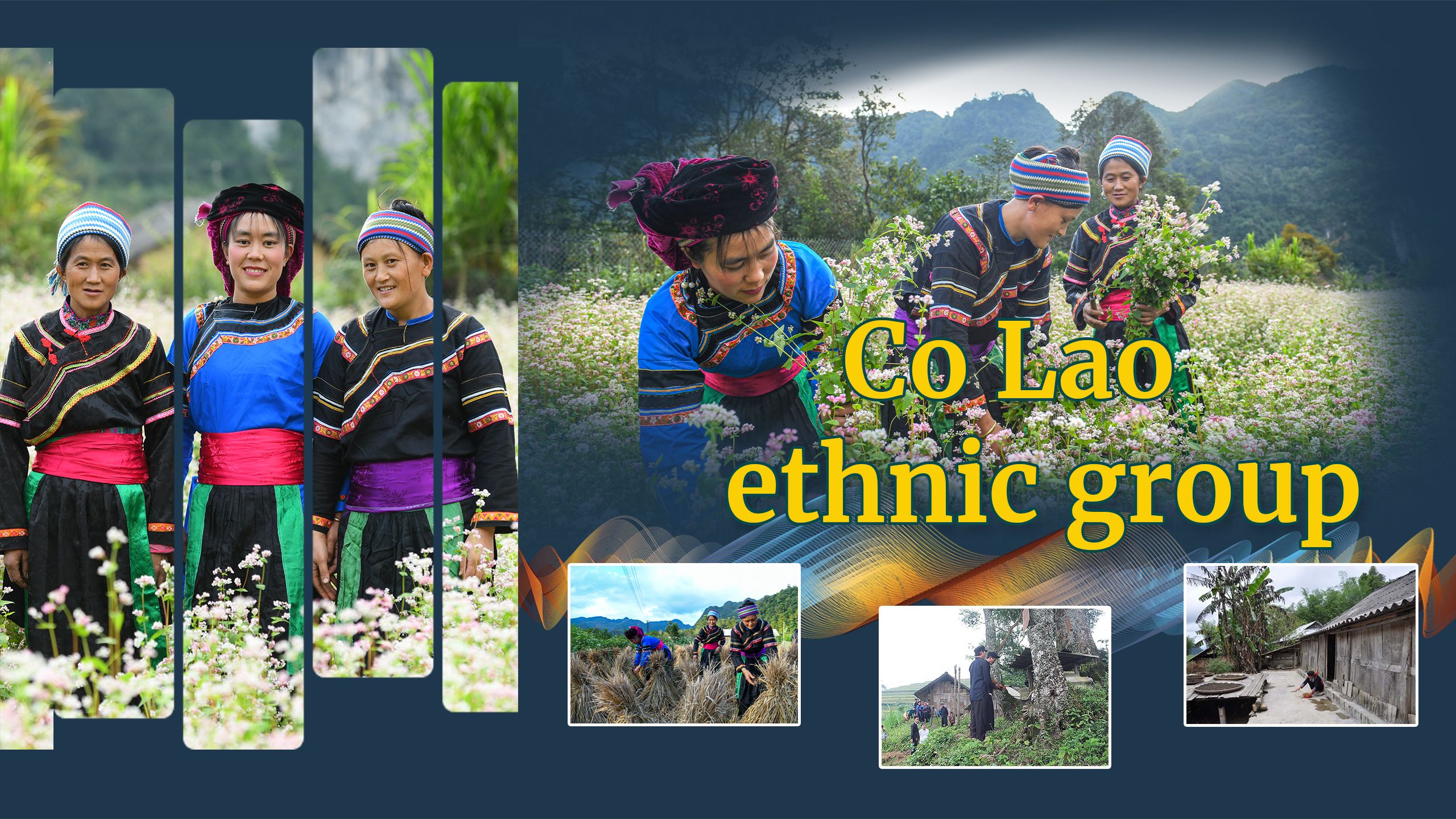
Co Lao is one of 16 ethnic groups that have a very small population in Vietnam. Today, the socio-economic development of Co Lao ethnic people has been greatly improved thanks to the support and preferable policies of the Party and State.
1. Origin
The Co Lao ethnic group is one of ethnic groups with very small population in Vietnam. The Co Lao ethnic group in Vietnam originally immigrated from China. Over the historical periods, the group gradually migrated to the South and then entered Vietnam. The first groups of Co Lao people came to Vietnam around 150 to 200 years ago. Their last group of migrations ended about 60-80 years ago.
2. Population
According to the 2019 Survey of 53 ethnic minorities, there are 4,003 Co Lao ethnic people in Vietnam, including 2,005 men and 1,998 women.
3. Geographical distribution
The Co Lao ethnic group resides only in Ha Giang Province, in the districts of Dong Van, Meo Vac, Hoang Su Phi, Yen Minh, Vi Xuyen, and Bac Quang.
4. Language
The Co Lao ethnic language belongs to the Ka Dai language group. Like the languages of La Ha, La Chi, and Pu Peo ethnic groups, the Co Lao ethnic language is part of the Thai – Ka Dai language family.Previously, Co Lao people in different localities had various dialects, but now the majority of Red Co Lao and Blue Co Lao sub-groups can no longer speak their mother tongue. Instead, they communicate in the languages of Nung, Pu Peo, or Mong ethnic groups.
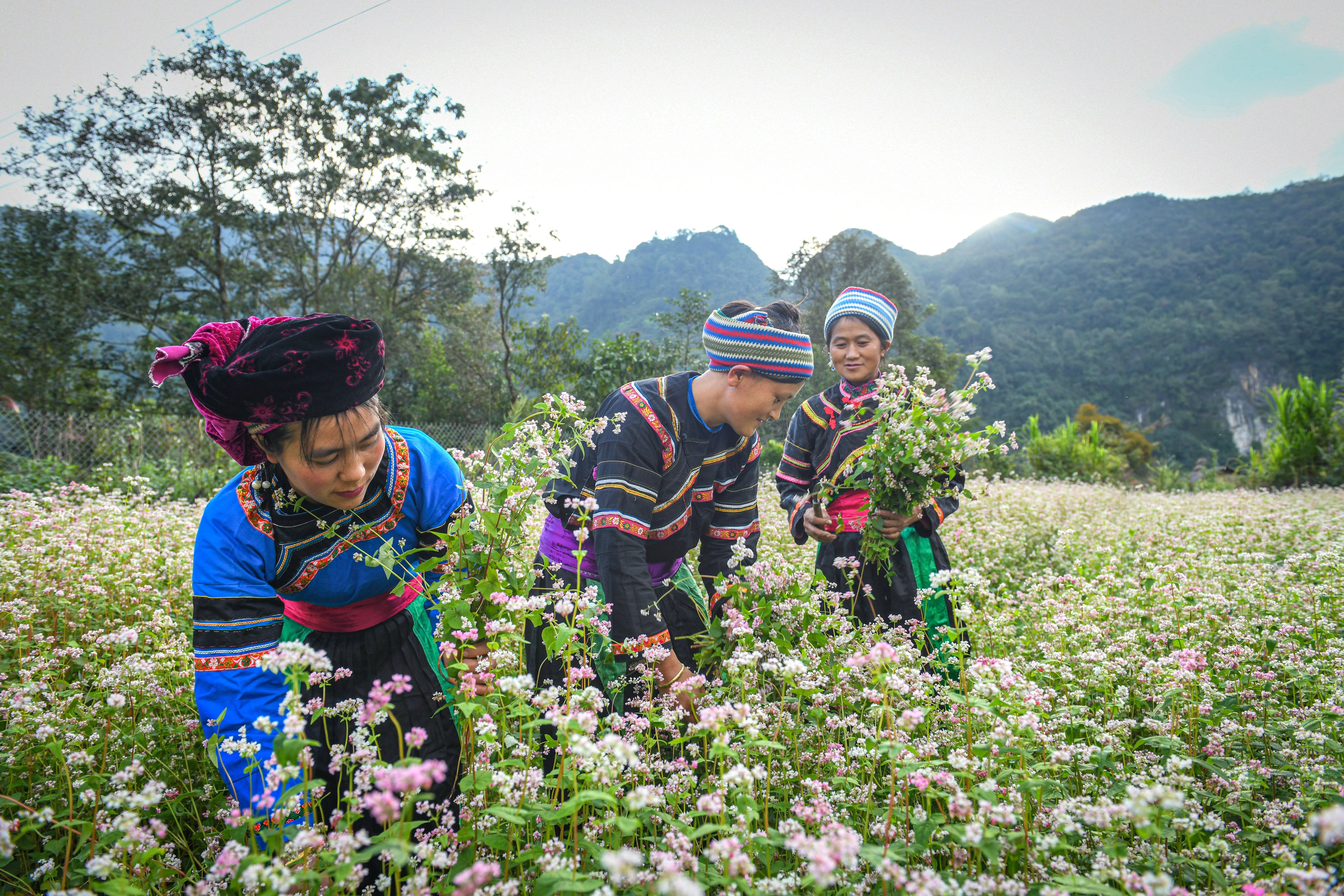
5. Main features
Social institutions: During the French colonial period, landowners who contributed to the establishment of the village or the head of a family clan were appointed to govern one or two villages or several families in the village. Today, the administrative management system is implemented from the grassroots level, in which the village of is the grassroots level of the commune level in administrative organisation.
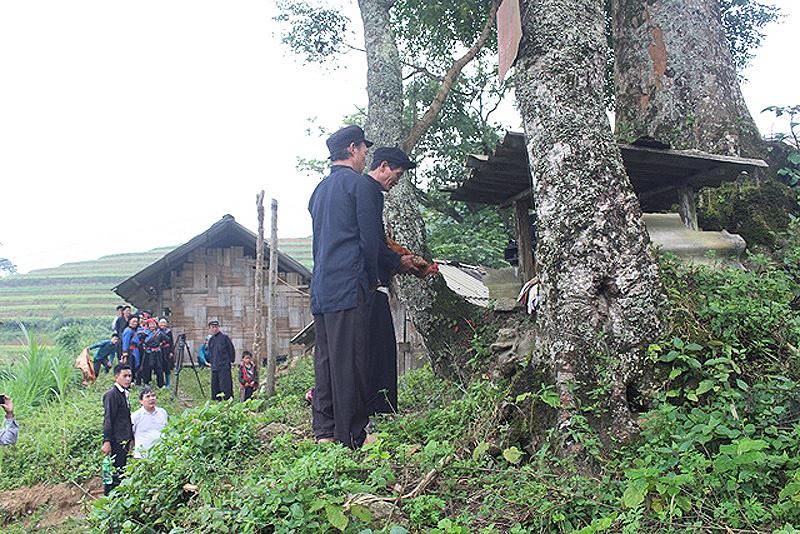
A ritual in Tung San Commune, Hoang Su Phi District, to worship Hoang Van Thung – the forefather the Co Lao ethnic group. (Photo: Ha Giang Provincial Newspaper)
A ritual in Tung San Commune, Hoang Su Phi District, to worship Hoang Van Thung – the forefather the Co Lao ethnic group. (Photo: Ha Giang Provincial Newspaper)
Religion and beliefs: It can be said that religion and beliefs of the Co Lao people have remained unchanged. Co Lao people still believe that the world is constituted by three elements: heaven, earth, and water. They also follow polytheism and animism.
Housing: The Co Lao people live in earthen houses. The house typically consists of three compartments and two lean-tos. Most of them are ‘trinh tuong’ (made-of-clay) houses and roofed with tiles.
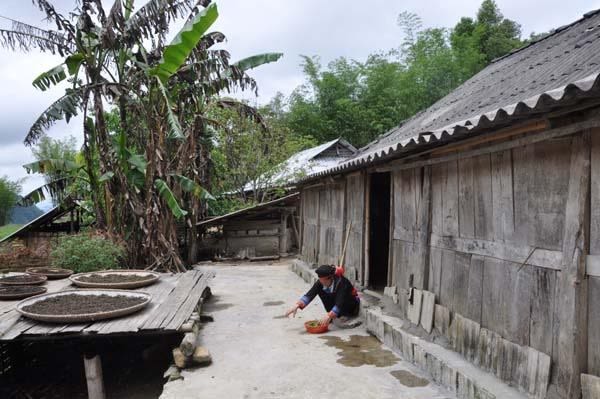
Traditional houses the Co Lao people. (Photo: VNA)
Traditional houses the Co Lao people. (Photo: VNA)
Clothing: Men's outfit consists of a hat, shirt and pants. The pants are in indigo or black colour, and is tailored as wide leg, ankle length, without pockets. The shirt is in indigo or black colour with a V-neck mandarin collar, and fabric buttons. The shirt usually has four open pockets.
Women's outfit includes pants, scarf, shirts, belts, leggings. In some localities, Co Lao ethnic women wear aprons like the H'Mong people.
Diet: Co Lao people’s dishes are mainly made from crop and livestock products. Livestock products include chickens, pigs, and goats.
Arts: The Co Lao people still tell their descendants about stories about their history of migration, the legend of the traditional dress, the traditional marriage, and the story of losing a tooth.
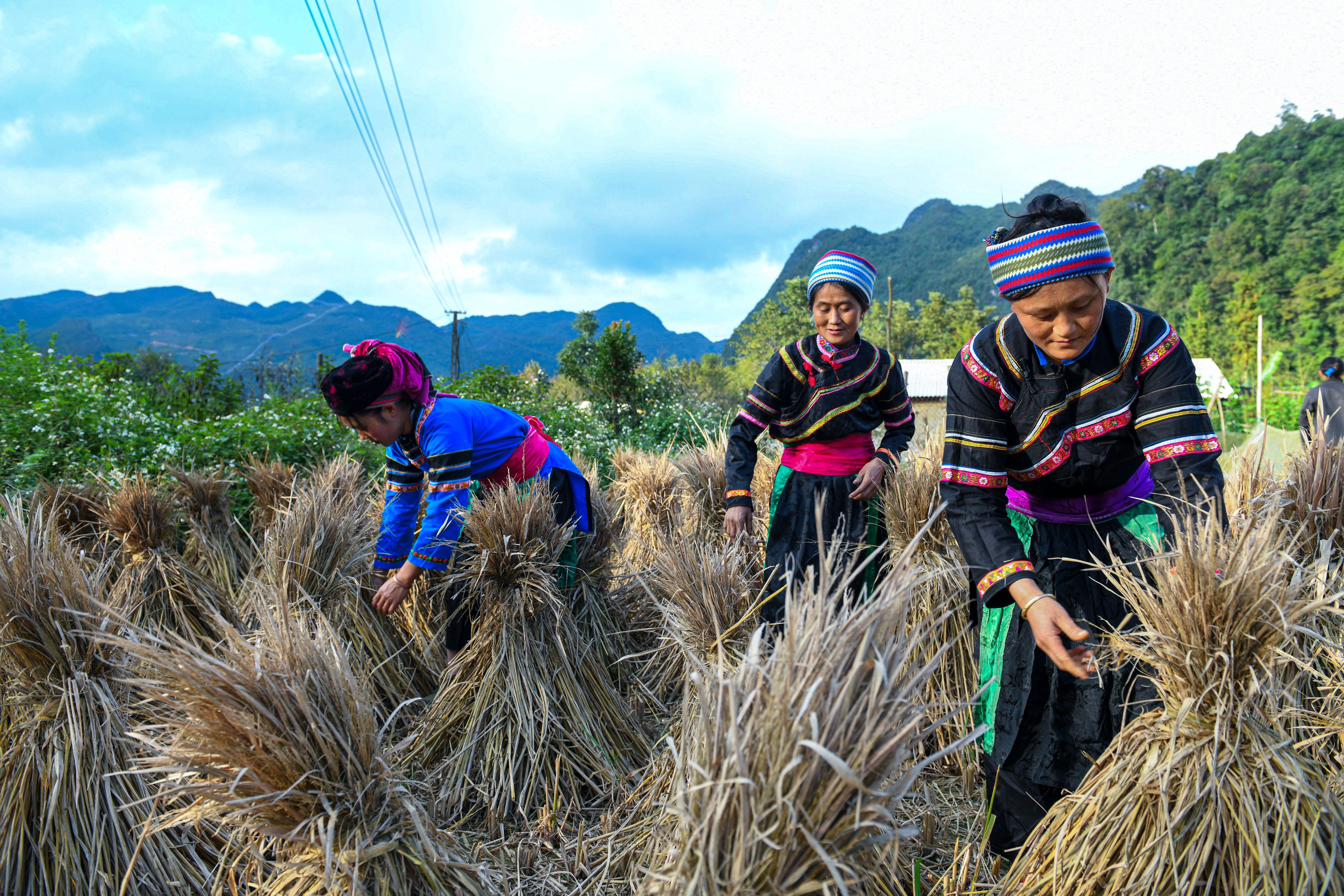
Growing rice is the main production activity of the Co Lao ethnic people (Photo: THANH DAT)
Growing rice is the main production activity of the Co Lao ethnic people (Photo: THANH DAT)
6. Economic conditions
The Blue Co Lao and White Co Lao sub-groups live in two districts of Dong Van and Meo Vac. They live mainly on cultivating rice and corn in rocky hollows. Meanwhile, the Red Co Lao sub-group resides in the two districts of Hoang Su Phi and Yen Minh, which are home to many mountains and valleys, thus they mainly earn their living from rice farming. In addition to the main food crop, the Co Lao people also grow a variety of beans, green vegetables and other crops. For every Co Lao family, this is an indispensable economic activity. Livestock not only provides animal traction and fertilizer for production, but they are also served as offerings at funerals, weddings, and festivals.
Like animal husbandry, handicrafts are just a side job. Carpentry is a handicraft activity that has existed for a long time and is quite developed in Co Lao families. Although making corn wine is not a prominent traditional craft in the Co Lao community, their corn wine is a widely known product in the market.
Gathering, such as hunting and fishing, used to be of one of the main livelihood activities in the past. But now it is just a supplementary activity for the agricultural activities of the Co Lao people.